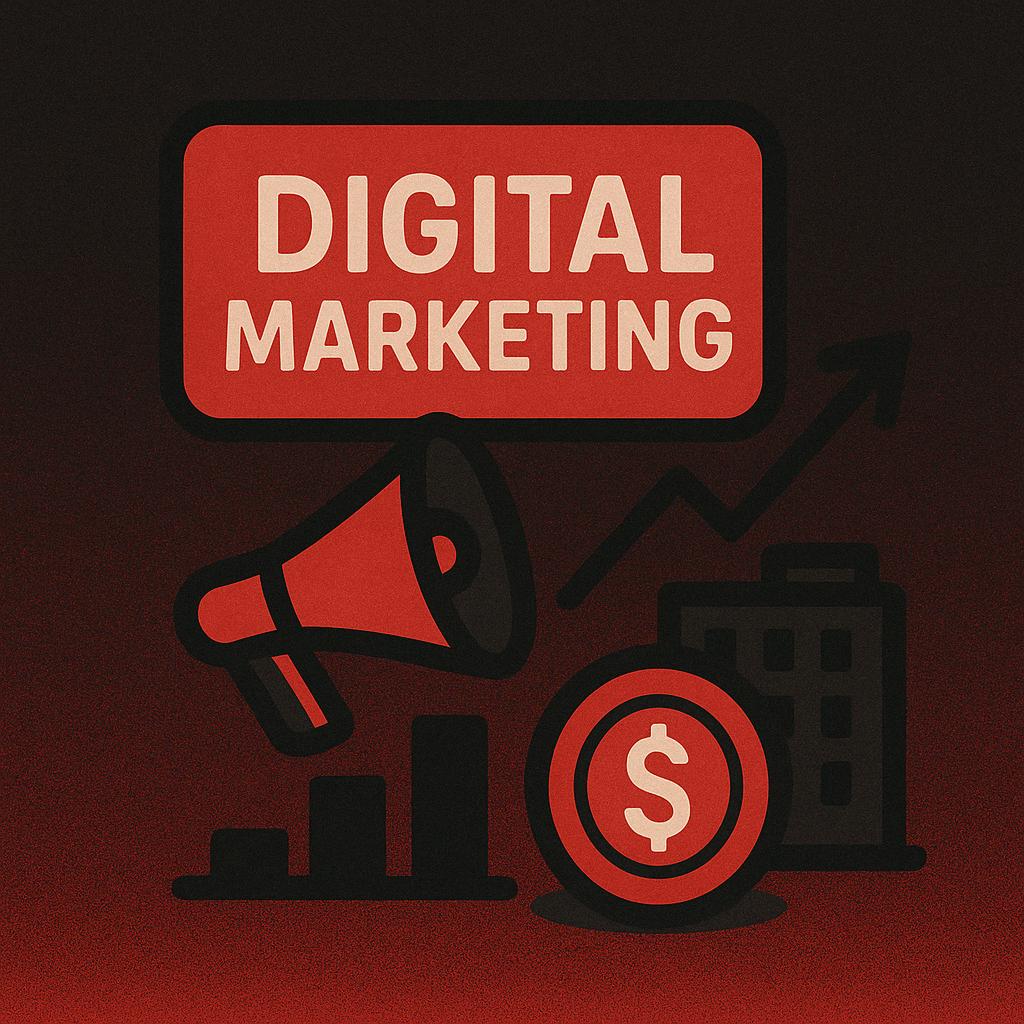What is Digital Marketing for Financial Services and Why Is It Crucial for Lead Generation?
In today’s digital world, businesses across all sectors are shifting their marketing strategies to focus more on online channels, and the financial services industry is no exception. Digital marketing for financial services refers to the use of digital channels such as websites, social media platforms, email, search engines, and online ads to promote financial products and services. This method of marketing enables financial institutions to connect with potential clients in a more direct, measurable, and cost-effective way compared to traditional methods.
The importance of digital marketing for lead generation in the financial services sector cannot be overstated. With more consumers turning to the internet for financial advice and services, having an online presence is no longer optional for financial institutions. Digital marketing provides a targeted approach to reach prospects, offering them valuable information and services at the right time, all while gathering data to improve future marketing efforts. Through well-executed digital strategies, financial companies can increase their reach, build trust with potential clients, and ultimately, generate high-quality leads that convert to paying customers.
Digital Marketing for Financial Services: Key Strategies for Lead Generation
Overview of the Most Effective Digital Marketing Strategies Tailored to the Financial Services Industry
Digital marketing strategies in the financial services industry must be customized to meet the needs of both businesses and consumers. Financial institutions are dealing with highly educated consumers who are looking for information, trustworthiness, and transparency before making any financial decisions. Therefore, effective strategies include:
- Search Engine Optimization (SEO): Optimizing your website content to rank higher in search engine results pages (SERPs) is essential. This involves creating relevant, informative, and engaging content that speaks directly to the needs of your target audience.
- Social Media Marketing: Social platforms are increasingly important for financial services. LinkedIn, Facebook, and X(Twitter) are some of the primary platforms where financial companies interact with both individuals and businesses. Content such as informative articles, thought leadership, and client testimonials can be shared to engage with your audience.
- Email Marketing: Nurturing relationships with prospects through personalized emails can help move them along the sales funnel. Financial service providers can segment their email lists and send tailored content that aligns with the recipient’s interests and behavior.
Pay-Per-Click (PPC) Advertising: Paid search ads, particularly Google Ads, allow financial services to target high-intent prospects. These ads show up when people search for specific financial products or services, making PPC a great way to generate leads quickly.
Benefits of Using Digital Marketing for Lead Generation Versus Traditional Methods
Digital marketing provides measurable results, something that traditional methods like print advertising or television commercials lack. By using digital tools like Google Analytics or social media insights, financial institutions can track how well their marketing campaigns are performing in real time, adjust strategies, and optimize for better results.
Another benefit is cost-efficiency. While traditional marketing methods often require a significant upfront investment, digital marketing allows for smaller, more flexible budgets that can scale. This is particularly beneficial for small and mid-sized financial firms that may not have the same advertising budget as larger competitors.
How to Use SEO for Lead Generation in Digital Marketing for Financial Services
Optimizing Content for Financial Services
In the world of SEO, content is king. For financial services, it’s essential to provide valuable, educational, and informative content that answers common questions your target audience is searching for. This could include topics like “best retirement savings plans,” “how to get a personal loan,” or “investment strategies for millennials.”
Creating high-quality blog posts, whitepapers, case studies, and articles not only helps build trust with potential customers but also increases the likelihood of ranking higher on search engines. The more relevant and informative your content is, the higher the chance you’ll capture organic search traffic and, in turn, generate leads.
Targeting High-Intent Keywords in Financial Services
High-intent keywords are those that show a straightforward buying or decision-making intent. For example, instead of targeting broad terms like “loans,” a financial service provider might target specific keywords like “best home loan options in [city name].” These precise keywords tend to attract prospects who are actively looking to make a purchase or take action, making them highly valuable for lead generation.
Financial services can use keyword research tools like Google Keyword Planner, SEMrush, or Ahrefs to identify high-intent keywords. These tools can help identify phrases that people are searching for when they’re actively seeking financial services.
Local SEO for Financial Services
Local SEO is essential for financial services that cater to clients in a specific geographic region. By optimizing your website for local searches—such as using city names or regional terms in your content and meta tags—you can ensure that you appear in search results when people in your area search for financial services.
Google My Business (GMB) listings are also crucial for local SEO. Ensuring your financial business has a verified GMB profile with accurate contact information, hours of operation, and customer reviews can significantly improve local visibility.
Leveraging Social Media in Digital Marketing for Financial Services
Building a Strong Social Media Presence
Social media platforms offer financial service providers an excellent opportunity to connect with their target audience personally. Platforms such as LinkedIn are great for B2B services, allowing financial institutions to communicate with business owners, CEOs, and decision-makers. At the same time, Facebook and Instagram can be used for B2C marketing to engage with individual clients.
Building a strong presence on social media involves consistent posting, engaging with followers, sharing informative content, and using paid ads to increase visibility. Financial services should focus on educational content, such as tips for saving, investing, or managing debt.
Engaging with Prospects Through Social Media Advertising
Paid social media advertising allows financial services to target a specific demographic based on age, location, interests, and financial behavior. For example, a bank could run an ad promoting mortgage products targeting users who are likely to be first-time homebuyers. Social media ads are cost-effective and measurable and allow for hyper-targeted campaigns.
Paid campaigns can also help you retarget people who have previously engaged with your content or visited your website, ensuring that they stay top of mind.
Email Marketing in Digital Marketing for Financial Services: A Lead Generation Tool
Building and Segmenting Email Lists
Building a strong email list of potential leads is essential for long-term success in financial services marketing. Start by offering valuable content in exchange for email subscriptions, such as free ebooks, webinars, or financial planning checklists. Once you have a list, segmentation becomes key.
Segmentation can be based on different factors such as:
- Demographic information (age, location, etc.)
- Stage in the buyer’s journey (awareness, consideration, decision)
- Product or service interest (retirement plans, loans, etc.)
- Job title and occupation
Segmenting your email lists allows you to send more personalized and relevant messages, increasing the chances of converting leads.
Crafting Personalized Email Campaigns
Personalization is key in email marketing. For example, a financial institution might send a first-time homebuyer tips on securing a mortgage, while a retired client could receive investment advice geared toward preserving wealth. By tailoring email content to the individual needs and interests of the recipient, financial companies can build stronger relationships and increase the likelihood of conversions.
PPC Advertising for Financial Services: Maximizing Lead Generation
Paid Search Ads (Google Ads)
PPC ads, especially Google Ads, are one of the fastest ways to drive targeted traffic to your financial services website. These ads appear when someone searches for a financial service you offer, such as “best car loans near me” or “financial planning services for retirement.” By paying for these ads, you ensure that your company appears in front of potential leads who are actively looking for your services.
The key to successful PPC advertising is targeting the right keywords, crafting compelling ad copy, and optimizing landing pages to ensure conversions.
Retargeting and Remarketing Strategies
Retargeting, or remarketing, is a powerful tactic for keeping potential leads engaged. When someone visits your website but doesn’t convert, you can use retargeting ads to remind them of your services as they browse other websites or social media platforms. This increases brand recall and encourages potential leads to return and complete a desired action, like filling out a contact form or signing up for a consultation.
Content Marketing for Financial Services: How to Create Lead-Generating Assets
Building Trust Through Valuable Content
Content marketing plays a significant role in building trust with potential clients. Financial services providers can create valuable assets such as informative blog posts, e-books, case studies, and webinars that educate prospects about various financial topics. By offering insightful, well-researched content, financial institutions demonstrate their expertise and help prospects make more informed decisions, thereby increasing the chances of converting them into leads.
Video Marketing for Financial Services
Video marketing is an excellent tool for financial services, especially when explaining complex concepts. Whether you’re creating explainer videos about investment strategies or sharing customer success stories, videos provide a more engaging and digestible format for your audience. Videos can also be shared across multiple channels, from YouTube to social media, expanding your reach and attracting potential leads.
How to Measure Success in Digital Marketing for Financial Services
Key Metrics to Track
Financial institutions must track several key performance indicators (KPIs) to evaluate the success of digital marketing campaigns. These include:
- Conversion Rates: How many visitors complete the desired action, such as filling out a contact form or signing up for a newsletter.
- Cost per Lead: The amount of money spent to acquire each lead.
ROI: Measuring the return on investment for each marketing effort helps financial service providers determine which channels are the most profitable.
Tools for Monitoring Campaign Performance
Using analytics tools like Google Analytics, HubSpot, and SEMrush allows financial companies to track the effectiveness of their campaigns. These tools provide detailed data about website traffic, user behavior, conversion paths, and more, allowing businesses to optimize their digital strategies over time.
Digital Marketing for Financial Services: Overcoming Common Challenges
Regulatory Compliance and Digital Marketing
The financial services industry is highly regulated, presenting unique challenges when implementing digital marketing campaigns. Financial companies must comply with regulations like the General Data Protection Regulation (GDPR) and the CAN-SPAM Act. This means getting explicit consent before sending marketing materials, providing clear opt-out options, and safeguarding customer data.
Dealing with High Competition
With so many financial services providers vying for attention, competition is fierce. To stand out in this saturated market, financial service providers must differentiate themselves by offering unique value propositions, such as specialized products, superior customer service, or unique financial advice. Content marketing, targeted campaigns, and personalized communication can also help companies set themselves apart.
Conclusion
Digital Marketing for Financial Services: Driving Sustainable Lead Growth
In conclusion, digital marketing for financial services is not just a trend—it’s an essential component of any modern lead-generation strategy. By implementing tailored strategies like SEO, social media marketing, email marketing, PPC, and content marketing, financial institutions can increase visibility, build trust, and generate high-quality leads. These efforts will not only drive more leads but also ensure sustainable growth in a competitive and ever-changing industry.
Financial institutions must embrace the power of digital marketing to ensure their long-term success. Start building your digital marketing strategy today and see how it can transform your lead generation efforts.

 Amazon Marketing
Amazon Marketing


